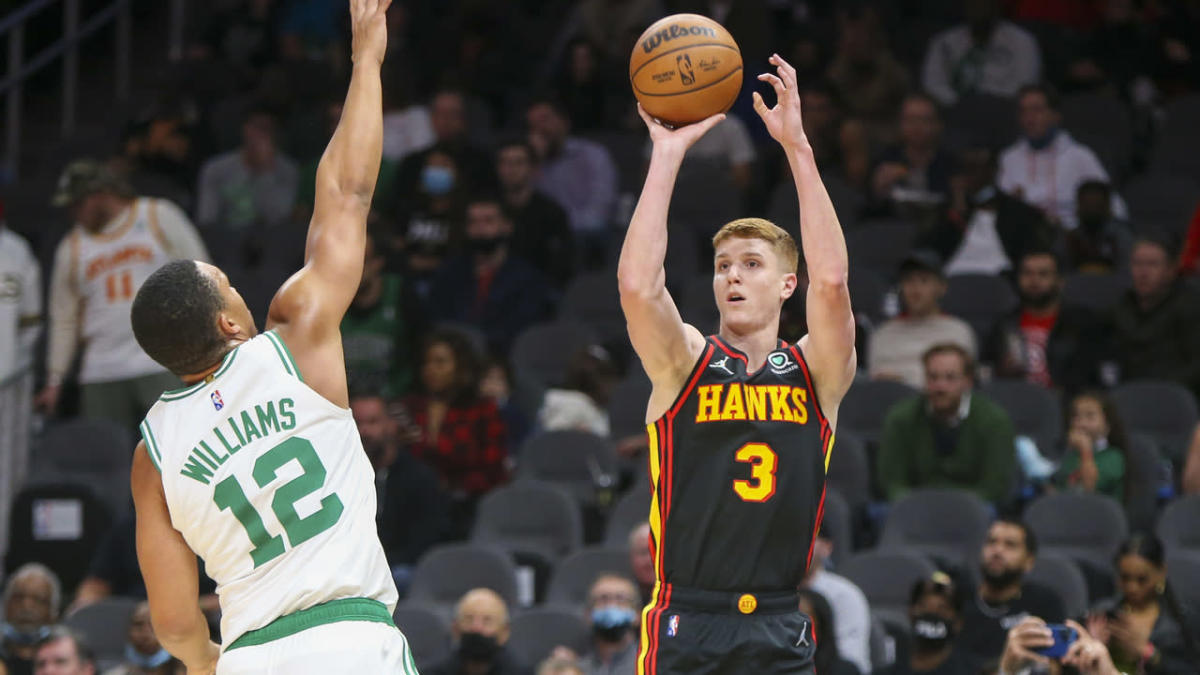
Celtics trade targets: Who could C’s acquire with three TPEs? originally appeared on NBC Sports Boston
Can the Boston Celtics become the first team in five years to appear in consecutive NBA Finals? That may depend on the work Brad Stevens does over the next few weeks.
The Celtics’ president of basketball operations identified a desire Tuesday to add more consistent bench scoring and playmaking this offseason. Among the tools at Stevens’ disposal are a host of traded player exceptions (aka TPEs), which can allow Boston to add players via trade without having to match salaries.
Celtics Talk: What hints did Brad Stevens offer about the Boston Celtics’ offseason plans? | Listen & Subscribe | Watch on YouTube
What are the specifics of the Celtics’ TPEs, and which players might they target with each exception? Here’s all you need to know about TPEs and the C’s.
What is a traded player exception?
TPEs are created when a team trades a player away without receiving any salary in return. They’re often generated after sign-and-trades.
For example, when the Celtics dealt Gordon Hayward to the Charlotte Hornets in November and received only a draft pick in return, they generated a $28.5 million TPE, which was the equivalent of Hayward’s salary on the first year of his contract.
How can traded player exceptions be used?
Think of the Hayward trade in reverse order: If the Celtics had a $28.5 million TPE, they could acquire Hayward (or any player making up to $28.5 million on the upcoming year of their contract) in a trade without having to “match salaries,” or send back players whose salaries add up to that $28.5 million figure.
A couple important notes about TPEs:
-
They usually expire one year after they’re created.
-
They can’t be combined with other TPEs. So, the Celtics couldn’t acquire a $20 million player using a $15 million TPE and a $5 million TPE.
-
They can be used to acquire multiple players. So, if the Celtics had a $20 million TPE, they could acquire two players making $10 million each next season.
How many traded player exceptions do the Celtics have?
The short answer: A lot. Boston currently has eight TPEs at its disposal. Five are worth less than $2.2 million, however, so we’ll just focus on the three big ones: $17.1 million, $6.9 million and $5.9 million.
Here’s a breakdown of each TPE and which players the Celtics may look to acquire with those assets.
Traded player exception No. 1: $17.1 million
How acquired: Evan Fournier trade with New York Knicks (Aug. 2021)
Expires: July 18, 2022
Players the Celtics could target:
-
Duncan Robinson, Miami Heat ($16.9 million salary in 2022-23)
-
Norman Powell, Los Angeles Clippers ($16.8 million)
-
Dejounte Murray, San Antonio Spurs ($16.6 million)
-
Kevin Huerter, Atlanta Hawks ($14.5 million)
-
Terrence Ross, Orlando Magic ($11.5 million)
The Celtics’ biggest TPE also expires the soonest. Robinson isn’t the best defender but would fill Boston’s need for shooting and has a connection with C’s assistant coach Will Hardy, as both attended Division III Williams College in Massachusetts. (Robinson transferred to Michigan after his freshman year.) Powell also is a strong 3-point shooter (38.4 percent for his career) and was linked to the Celtics prior to the 2021 NBA trade deadline.
While Murray seems like an unlikely target if Boston keeps Marcus Smart at point guard, he did overlap with Celtics head coach Ime Udoka for three seasons in San Antonio.
Huerter and Ross are both enticing targets. The Celtics and Hawks reportedly discussed a trade involving Huerter and Smart back in February, and the 23-year-old wing could provide a scoring boost off the bench. The same goes for Ross, who turned 31 in February but would add some much-needed scoring depth.
Traded player exception No. 2: $6.9 million
How acquired: Juancho Hernangomez trade with Memphis Grizzlies (Aug. 2021)
Expires: Jan. 19, 2023
Players the Celtics could target:
-
Justin Holiday, Sacramento Kings ($6.3 million)
-
Rui Hachimura, Washington Wizards ($6.3 million)
-
Patty Mills, Brooklyn Nets ($6.2 million; player option)
Our Chris Forsberg tabbed Holiday as a potential trade deadline target in January, and the 33-year-old would give the C’s some veteran leadership. Mills is another Udoka disciple from their San Antonio days and could be a steadying backcourt presence behind Smart.
Boston reportedly plans to bring Al Horford back next season, but he may not be able to log heavy regular-season minutes at age 36, so the 24-year-old Hachimura would be an intriguing depth option in the frontcourt.
Traded player exception No. 3: $5.9 million
How acquired: Dennis Schroder trade with Houston Rockets (Aug. 2021)
Expires: Feb. 10, 2023
Players the Celtics could target:
-
Cam Reddish, New York Knicks ($5.9 million)
-
Pat Connaughton, Milwaukee Bucks ($5.7 million; player option)
-
Ish Smith, Washington Wizards ($4.7 million)
Reddish also was involved in that hypothetical Smart trade and would fit well in Boston as a rangy wing behind Jayson Tatum and Jaylen Brown.
Connaughton, the pride of Arlington, Mass., is an excellent outside shooter with an NBA title on his résumé, while Smith is a Celtics killer who’d fit a mold similar to Mills as a playmaking backup point guard.
All of these potential trades would require the C’s giving up some sort of capital (likely draft picks), and the above players only would be available if their teams wanted to free up cap space. Stevens suggested Boston may take a conservative approach this offseason and only add players who mesh well with the Celtics’ current core.
But if the C’s want to improve their roster, the TPE is a valuable tool, and there’s no shortage of options available.
